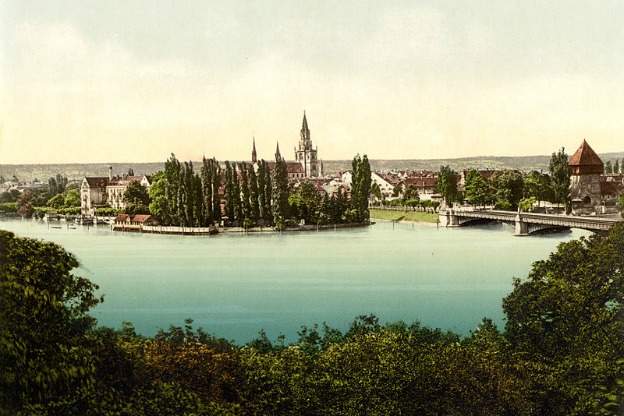
The Council of Constance
The Council of Constance was an enormous international gathering from all over Europe that took place between the years 1414 and 1418. The reason for the Council was that the Catholic Church had been divided for decades, and they needed to decide once and for who was really the Pope.
In 1378, Gregory XII in Rome and Benedict XIII in Avignon both claimed the papacy. But two Popes are not better than one, and in 1409 a council in Pisa tried to rectify the situation by electing a new Pope entirely. But that only made the situation worse because neither Benedict nor Gregory would step down. By the time the Council convened, the Church had three Popes, each with different political and geographical allegiances. They needed to figure things out, and so the council at Constance was called to see if they could reunite the Church.
The meeting attracted tens of thousands of visitors and dignitaries and church officials, many of whom brought with them large entourages of their own workers and craftsmen, chapel staff and musicians in a display of pomp, ceremony, wealth and status. So, by extension, the meeting of church leaders resulted in an impressive gathering of musicians too.
Capella de la Torre
Capella de la Torre has made a program that reflects the kind music that could have been heard at this international gathering, both festive and functional. Dances and popular songs, along with instrumental settings of sacred vocal music are all included on the disc, grouped under the ensemble's own inventive subtitles like the “Ingenious Italians,” “the Brave British,” “The Thirsty Germans” and a “Jam session” that presumably gathers from a variety of influences.
Capella de la Torre play a variety of instruments including shawms, sakbuts, slide trumpets, lute, percussion and even a cowhorn. We know from 15th-century accounts that these were the kinds of instruments in use at the time. The Minnesänger Oswald von Wolkenstein was an eyewitness at the Council of Constance. He described “pipes, strings and drums,” “crowds of people in procession,” “singing” and “the sounding of many tones.” A contemporary source by Ulrich von Richenthal also describes a conservative estimate of 365 musicians, among them shawm, slide trumpet, and trombone players.
Capella de la Torre’s recording on the Challenge Classics label is titled Piffarissimo, and its release coincides with the 600th anniversary of the Council of Constance.









